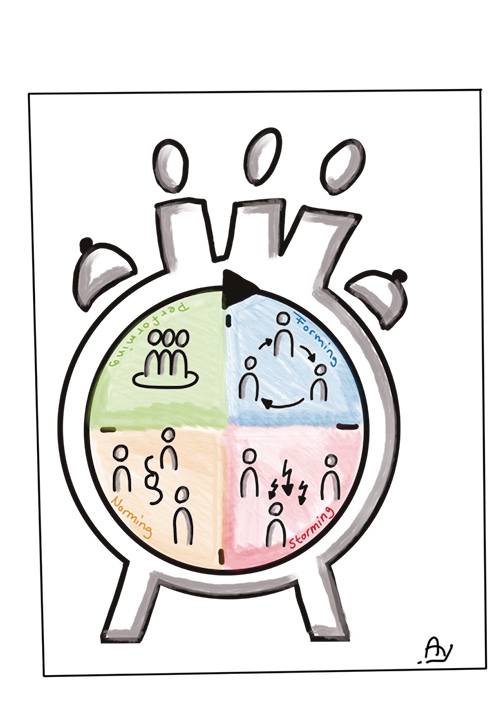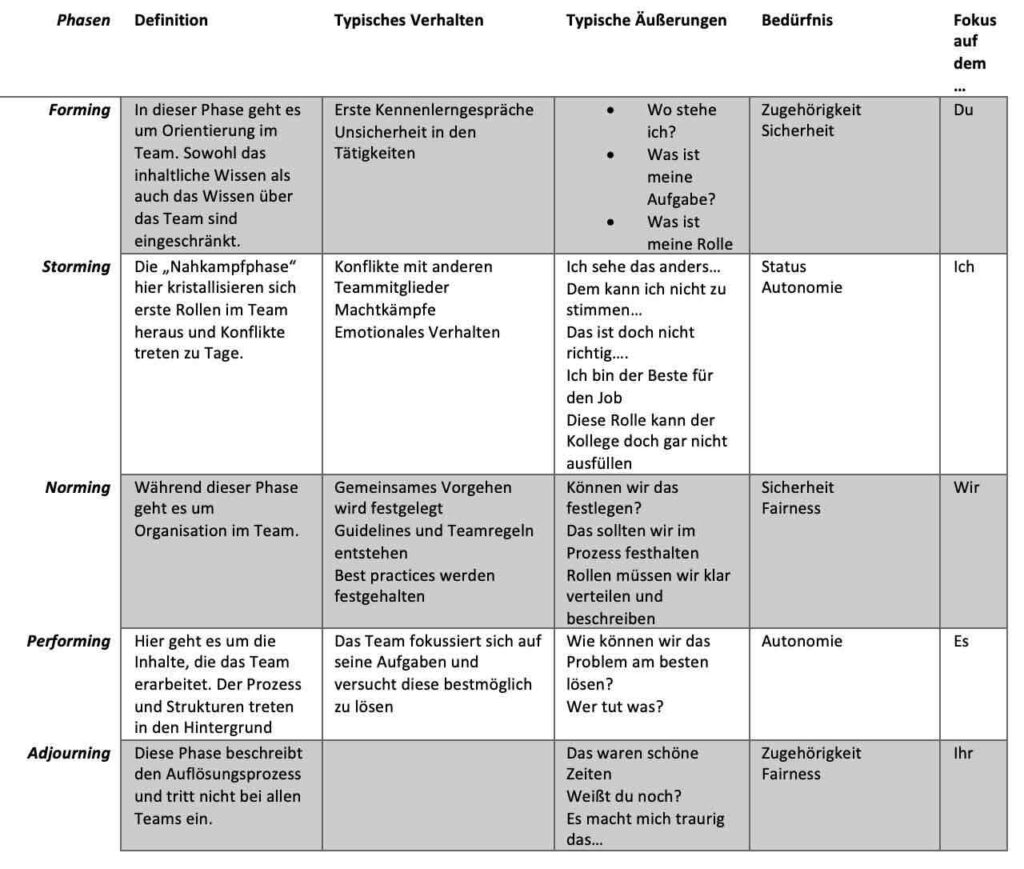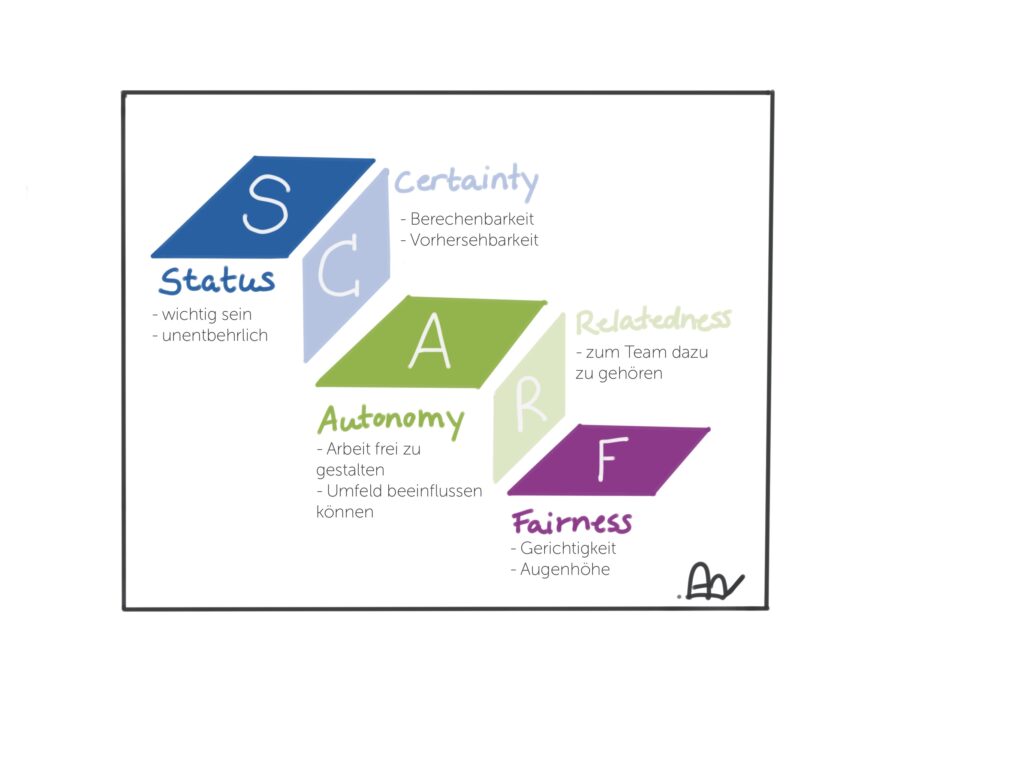It is often discussed that it is the task of the Scrum Masters is to build a "high performance team". Such a high performance team is well-rehearsed, responsive and characterized by high work performance. Wikipedia defines a high performance team as follows:
"High-performance teams(HPTs) is a concept within organization development referring to teams, organizations, or virtual groups that are highly focused on their goals and that achieve superior business results. High-performance teams outperform all other similar teams and they outperform expectations given their composition."
Source: Wikipedia
But high performance teams do not fall from the sky. A team can develop into one over a period of time. Teams go through different phases along the way. These are often referred to as team phases. This often refers to the team phases according to Tuckmann's theory.
Tuckmann's team phases theory
Bruce Tuckmann was a psychologist and taught at Ohio State University. He published his theory on team phases in 1962 under the title "Developmental sequence in small groups". His theory is based on four team phases: Forming, Storming, Norming and Performing.

Together with Jensen, he added a fifth phase ("adjourning") to his model in 1977. The phases can be recognized or distinguished as follows:
Forming
In this phase, the team slowly gets to know each other. The team's focus during this phase is on:
- Orientation
- Testing
Storming
Here, the focus in the team shifts to power struggles and content-related conflicts. The team's focus during this phase is on:
- Polarize
- Power struggles
Norming
During norming, the team establishes common rules and standards and a sense of togetherness is created. This is where the team focuses:
- New rules
- New roles
Performing
In this phase, the team is "well-rehearsed", the focus is on working together on content and no longer on structure. This is where the team focuses:
- The work process is flexible and supportive
- Solve the tasks in terms of content
Adjourning
This phase only occurs with teams that disband, such as a project team. The "team" focuses here:
- Team members are "wistful"
- Mourning their team
The course of the team phases
According to Tuckmann, a team goes through all of these phases until it reaches the performance phase. It should be noted that the phases can vary. Furthermore, a team can fall back into phases it has already gone through and go through them again. This can be the case, for example, if a team member leaves the team or a new one joins.
Conversely, this underlines the fact that if we want to build a high-performance team, it is important to have permanent, non-changing team members. If this is not the case, we accept the risk that we may not be able to build a high-performance team or that this will only happen very slowly.
In order to support an agile team in its development into a high performance team, it is important to recognize the phase in the first place and, in a second step, to support the team in overcoming this phase. We will take a closer look at these two steps in the following sections.
How to recognize and distinguish the team phases
It is important to recognize the individual phases so that we can then support the team in the corresponding phase and accompany them into the next phase. The individual team phases are difficult to define in general terms, but there are a number of indicators that can help us to do so. I have summarized these indicators in an overview. The following table is made up as follows:
- Definition of
- The definition contains a brief description of the phase.
- Typical behavior
- Typical behavior patterns are shown here
- Typical statements
- Example sentences are listed in this section
- Need
- This column describes the needs in this phase in a few bullet points.
- Focus on the ....
- Here is a list of what the team members focus on fundamentally in these team phases
The table should serve as an indicator to recognize the team phase the team is currently in. Only once the current phase has been recognized does it make sense to think about how the team can be accompanied into the next phase.

What can I do in which team phase to support the team?
In order to support a team in moving from one team phase to the next, it is important to recognize the central needs of the respective team phase and to work with these needs.
You can use David Rock's SCARF model as a guide to help you consider the most important needs:

During the forming phase, the primary focus is on the needs of relatedness and certainty. So if you want to support your team in this phase, ask yourself: "How can I satisfy the need for togetherness and certainty?"
In storming, on the other hand, the team members look for their place in the team. This is primarily about the needs of status and autonomy. Everyone wants to be important and indispensable in the team, be able to influence the team and express their opinion. If you make room for these needs here, you can also leave this phase behind you.
Norming is primarily about the need for fairness, but also about certainty. The team wants to achieve fairness and equality through agreements. However, the agreements also serve to provide security and reliability. Here, for example, you can work out team agreements together.
In Performing, the team members are well attuned. The team looks at autonomy as a unit and wants to be able to shape its teamwork and influence its environment. This can be about good working environments or how requirements can be described well.
If team members are still in the adjourning phase, the needs of fairness and relatedness are at the forefront. It often feels unfair to leave a well-functioning team and face a new team. I also don't feel like I belong to the new team yet, which brings with it uncertainty.
Conclusion and outlook
Tuckmann's team phases can help you to further develop a team. However, they are only an indicator and it is always important to keep in mind that the phases can also be experienced very quickly and can repeat themselves! The latter has often helped me in coaching sessions to prepare for a potential new storming when there are changes in the team or to consciously create space for these phases, e.g. through a small team event when someone new joins, through a farewell party when someone leaves, through a retro that picks up on our DoD again and refines it, etc. Over the next few weeks, blogs on the individual team phases will follow in detail, with ideas for techniques and methods to help you.
Here you will find the overview table slightly adapted to download. I always use it in my coaching journals to have an overview of the development of the team. Let me know if it helps you too 🙂

Write a comment